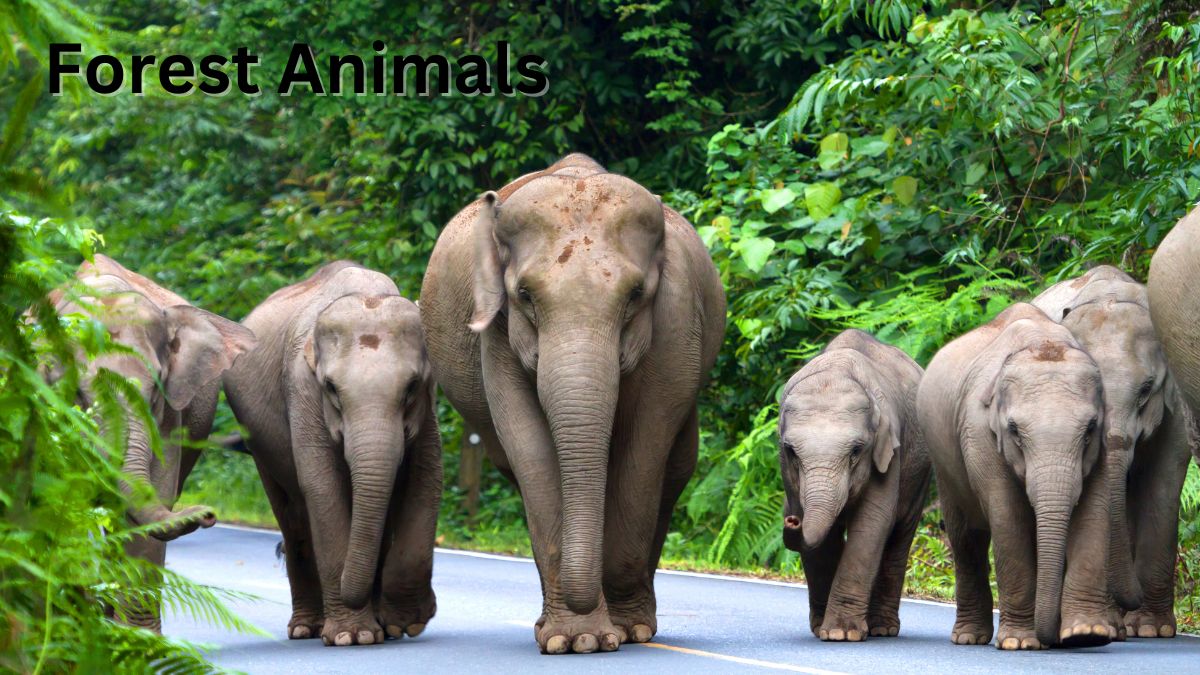Forests, often referred to as the lungs of the Earth, are home to a diverse array of wildlife. These animals play crucial roles in maintaining the ecological balance of their habitats. Here, we explore the top 12 forest animals, showcasing their unique characteristics and the importance they hold in the wild.
Top 12 Forest Animals
1. Tiger
Tigers, the largest members of the cat family, are iconic predators found in tropical forests. Known for their striking orange coats with black stripes, these majestic animals are apex predators, playing a vital role in controlling herbivore populations. Native to Asia, they inhabit dense jungles, mangroves, and grasslands.
Fun Fact: A tiger’s roar can be heard up to 2 miles away!
2. Elephant
Forest elephants, a subspecies of African elephants, and Asian elephants are common in dense forests. Known for their intelligence and social behavior, they are ecosystem engineers, creating paths through forests and spreading seeds.
Fun Fact: Elephants use their trunks for communication, feeding, and even expressing emotions.
3. Orangutan
Orangutans, often referred to as the “people of the forest,” are primarily found in the rainforests of Borneo and Sumatra. These intelligent primates spend most of their lives in trees, building nests and foraging for fruit.
Fun Fact: Orangutans share about 97% of their DNA with humans.
4. Jaguar
Jaguars are powerful big cats found in the rainforests of South and Central America. With their beautiful spotted coats, they are excellent swimmers and often hunt in water-rich habitats.
Fun Fact: Jaguars have the strongest bite force of any big cat, enabling them to crush the shells of turtles.
5. Gorilla
Gorillas, the largest primates, inhabit the forests of central Africa. Living in family groups led by a dominant silverback male, they are gentle giants, feeding on leaves, fruits, and bamboo shoots.
Fun Fact: Gorillas communicate using more than 20 different sounds.
6. Red Panda
Red pandas, resembling a mix between a cat and a bear, are found in the temperate forests of the Himalayas. They are known for their reddish-brown fur and bushy tails, and they primarily feed on bamboo.
Fun Fact: Red pandas are most active at dawn and dusk, making them crepuscular animals.
7. Sloth
Sloths are slow-moving mammals native to the rainforests of Central and South America. Spending most of their time hanging upside down in trees, they are known for their algae-covered fur, which provides camouflage.
Fun Fact: Sloths only come down from trees once a week to defecate.
8. Wolf
Wolves inhabit a variety of forested regions around the world. Known for their complex social structures, they live and hunt in packs, preying on animals like deer and elk.
Fun Fact: Wolves can travel up to 12 miles a day in search of food.
9. Lynx
Lynxes are medium-sized wild cats found in the forests of North America, Europe, and Asia. Known for their tufted ears and short tails, they are solitary hunters, preying on small mammals.
Fun Fact: A lynx’s sharp vision allows it to spot a mouse from over 200 feet away.
10. Capuchin Monkey
Capuchin monkeys, found in the tropical forests of Central and South America, are highly intelligent primates known for their problem-solving skills and tool use. They play an important role in seed dispersal.
Fun Fact: Capuchins use stones to crack open nuts and shells.
11. Bald Eagle
The bald eagle, a symbol of freedom, is found in North American forests. These majestic birds of prey have sharp talons and powerful beaks, hunting fish and small mammals.
Fun Fact: Despite its name, the bald eagle is not bald; its white head feathers give it the appearance of baldness.
12. Koala
Koalas, often mistakenly called bears, are marsupials native to the eucalyptus forests of Australia. They feed exclusively on eucalyptus leaves and spend most of their time sleeping in trees.
Fun Fact: Koalas sleep up to 20 hours a day to conserve energy.
Conclusion
These forest animals are not just fascinating creatures; they are integral to the health of their ecosystems. Protecting their habitats ensures the survival of countless species and the well-being of our planet. By understanding and appreciating the diverse wildlife of forests, we take a step closer to preserving nature’s incredible treasures.
FAQs
Q1. Why are forest animals important?
Forest animals maintain the balance of ecosystems by controlling populations, dispersing seeds, and contributing to the food chain.
Q2. Which forest animal is the smartest?
Orangutans and capuchin monkeys are considered among the smartest due to their tool use and problem-solving abilities.
Q3. How can we protect forest animals?
Protecting their habitats, reducing deforestation, and supporting conservation programs are key to safeguarding forest animals.
